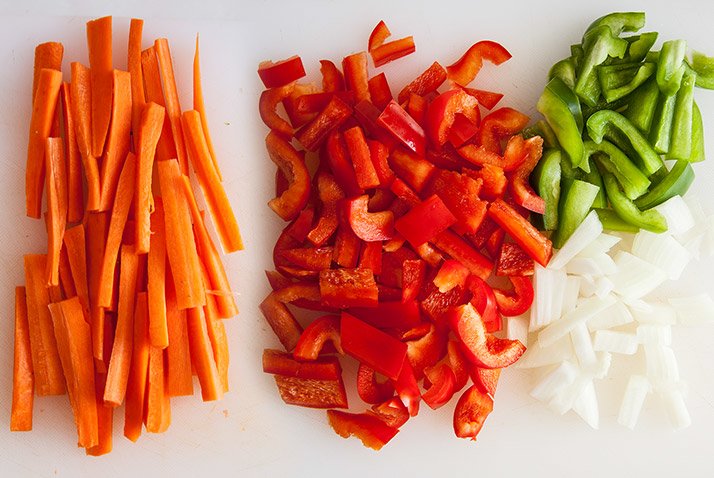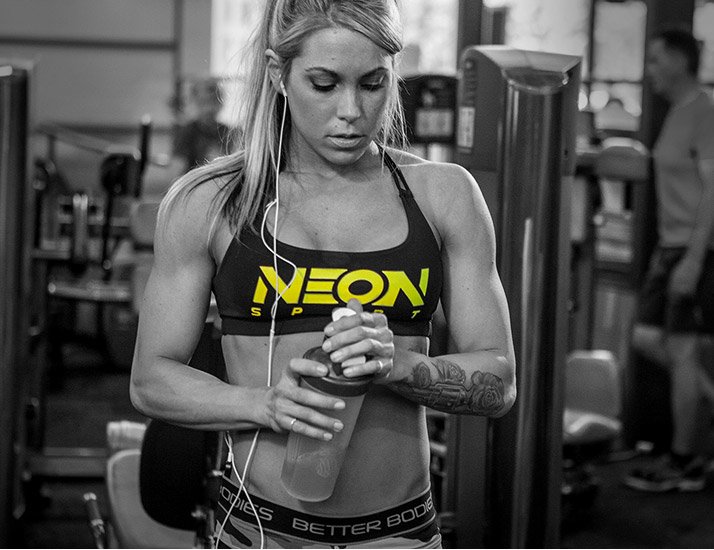
8 Get-Lean Nutrition Tips From Ashley Hoffmann!
Use these 8 fat-torching strategies to transform your fat-burning diet from good to great, and take your physique to the next level!
Are you looking to melt body fat and achieve your leanest physique yet? While a healthy diet and regular exercise are great places to start, they're a little too general if you really want to carve a chiseled body. After all, there's more to getting fitness-model lean than eating your veggies, packing in a gram of protein per pound of body weight, and fitting in three daily servings of fruit.
If you want to take things to the next level and get stage-ready shredded, it's important to have a few additional tips and tricks on hand. Lucky for you, WBFF pro and sponsored fitness model Ashley Hoffmann is here to share her top strategies for obtaining competition-ready leanness. Implement them into your routine to kick-start your own dream cut!
Change Up Your Diet
When dieting, too many people get into the rut of eating the exact same thing day in and day out. Eating healthy doesn't have to mean endless days of carefully weighed-out portions of boiled chicken, broccoli, and brown rice. As Hoffmann notes, it's important to be flexible. "Keeping variety in your diet will help break up the monotony," she says.
By "eating the rainbow," you'll also help ensure that you're getting the full spectrum of vitamins and minerals your body needs. "I incorporate different protein, carb, and fat sources on a regular basis so that I'm never bored," Hoffmann says.

Sick of sweet potatoes? Try quinoa. Over tilapia? Branch out to swai. The Bodybuilding.com Healthy Recipe Database has a seemingly endless variety of new tastes, combinations, and foods for you to try!
Make Whole Foods a Priority
When structuring her diet, Hoffmann makes sure to reduce her intake of processed foods. "Whole foods fuel my body with the energy I need throughout the day and keep me feeling satisfied longer than packaged foods," she says.
Bypassing refined products also provides nutritional benefits. By eating foods in their natural state, you're getting all of the vitamins, minerals, and nutrients they have to offer. Many foods get robbed of critical components during processing.
Focus On Fiber
There's value in counting carbs, but that doesn't mean you can skimp on fiber. "Fiber is one thing people tend to forget about, but it's very important," Hoffmann explains. "It helps you stay satisfied and fuller longer because it slows down absorption and digestion, making it easier to sustain a reduced-calorie diet plan."
Being selective about what foods she eats allows Hoffmann to maximize her macros. Filling her meals with low-glycemic, high-fiber legumes such as beans and nuts, grains such as oats, and fruit like apples means she gets the most nutritional bang for her buck.
Load up on Vegetables
One food that Hoffmann can't get enough of when leaning out is vegetables. They're the one place you can eat in bulk at a low nutritional cost! "If you've ever heard anyone say they are a volume eater, veggies are a staple food," she says.
A plateful of greens will fill you up without filling you out, and it will deliver a wide range of beneficial micronutrients in the process. Simply seeing more food on your plate can also help trick your brain into feeling less like you're dieting. It's a nutritional win-win!
Harness Carbohydrates
It's common to fear carbohydrates when trying to shed fat, but they're not a macro that should be avoided. "Carbs have been looked at as the enemy, but that really isn't the case. In fact, they can actually help throughout your fat-loss journey," Hoffmann points out.
Carbohydrates provide the energy your body needs to get through intense workout sessions, which, in the long term, can help you shed unwanted body fat by burning calories during and after training.
Timing your complex carb intake around your workouts—the time when your body is most likely to use them to fuel activity and recovery—may grant you performance and recovery benefits without contributing to your waistline.
Be Smart With Fat
Fats are very calorie dense. A small serving contains a hefty amount of calories—nine calories per gram, to be exact. While you want to keep an eye on how many grams you consume while cutting, it's important not to cut out healthy fats completely.

Remember, eating fat doesn't make you fat. In fact, the opposite may be true. "Fats keep our bodies functioning properly and play a huge role in hormone development," Hoffmann says. "Without adequate dietary fat, you can't lose [body] fat!"
Stick to healthy sources of fat such as olive oil, nuts, seeds, avocados, coconut oil, grass-fed beef, and fatty varieties of fish such as salmon. Including these healthy options will help bring balance to your diet plan. Just remember to keep them out of the pre- and post-workout meal, as this might lead to an upset stomach prior to training and delay post-workout nutrient delivery.
Hydrate, Hydrate, Hydrate
When focusing on nutrition, don't make the mistake of neglecting your fluid intake. "Drink lots of water," Hoffmann says. "It'll prevent you from becoming dehydrated and help you feel full."
Find yourself looking for something to munch on throughout the day? Staying hydrated throughout the day works to suppress cravings, reducing the likelihood of mindless snacking.
Not taking a water break between sets could do more than leave you parched; it could affect the quality of your training session! Even small amounts of dehydration can decrease your strength output and reduce performance.1
Monitor Your Calorie Intake
Ultimately, if you want to see major fat-loss success, it's important to track your calories. "Stay on track, be accurate, and always stay consistent," Hoffmann says.
You may lose those first 10 pounds simply by making smarter food choices, but there will come a point where it won't be enough. When you plateau, you'll need to really focus on tracking how much you are eating to ensure you're indeed in a caloric deficit while still supporting hard training and optimal recovery.
Knowing what you're putting into your body is the only way you can guarantee the results you're getting out of your training. You can only tweak your program if you know your starting point. If your progress has reached a standstill, a simple reduction in intake could be all you need to keep making progress.
Tracking calories simplifies the process and virtually guarantees success. While it may take some time initially, knowing your exact carb, fat, and protein breakdown is definitely time well spent.
References
- Casa, D.J., Armstrong, L.E., Hillman, S.K., Montain, S.J., Reiff, R.V., Rich, B.S.E., Roberts, W.O. & Stone, J.A., National Athletic Trainer's Association Position Statement: Fluid Replacement for Athletes. Journal for Athletic Training, 35(2), 212-224.

